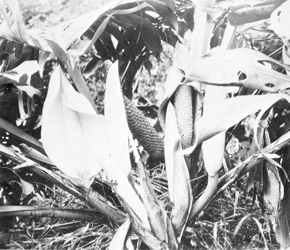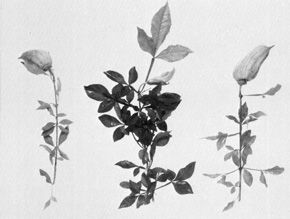
Figure 14. Monstera deliciosa, or ceriman, an unusual but delicious fruit. Utilization: Pulp eaten fresh, made into jellies, jam. Flavor sweet, aromatic, unpleasant to some because of irritating crystals in pulp. Limited potential as food plant. Important as ornamental. References: Fouqué 1974, Ruehle et al. 1958. BalanitaceaeBalanites aegyptiaca (L.) Del. Common names: desert date, soapberry tree (English). Origin: Africa. Distribution: Africa; Introduced widely elsewhere but rare. Cultural requirements: Hot arid climate; not tolerant of humid climate. Description: Tree to 13 m. Propagation by seed. Flowers January-February (Africa). Fruit matures in 60 days. Fruit 4 cm long, solitary, yellow exterior. Utilization: Pulp eaten fresh, dried; fermented to make alcoholic beverage. Flavor sweet, somewhat bitter; moderate appeal. Good potential as food crop in arid areas. Reference: Irvine 1961. BignoniaceaeParmentiera edulis A. DC. Common names: parmentiera (English); cuachilote (Spanish). Origin: Mexico, Central America. |

Figure 15. Cuachilote, a banana-shaped fruit with a sugarcane taste. Distribution: Tropical America. Cultural requirements: Lowland forest areas with medium to high rainfall. Description: Tree to 10 m. Propagation by seed. Fruit production in 3-5 years. Flowers all year. Fruit elongate, 10-18 cm long, solitary on trunk and large limbs; external color yellow with red blush, internal white. Utilization: Pulp eaten fresh, cooked, preserved. Flavor sweet, somewhat bitter; limited appeal. Little potential as food crop. References: Fouqué 1974, Kennard and Winters 1960. BombacaceaeAdansonia digitata L. Common names: baobab, monkey bread (English); calabassier du Senegal (French); hijid (Arabic). Origin: Africa. Distribution: Africa, Australia; widely introduced elsewhere in Tropics but not common. Cultural requirements: Hot climate with low to medium rainfall. Description: Tree to 20 m. Propagation by seed. Fruit production in 8-10 years. Flowers May-June (Africa). Fruit oblong, 20-30 cm long, solitary; external color brown, interior reddish yellow. Utilization: Pulp used as flavoring or as food mixed with other ingredients. Seeds roasted or soaked and fermented. Flavor sour, pleasant. Important crop in native area; little potential elsewhere. References: Dalziel 1948, Irvine 1961. |